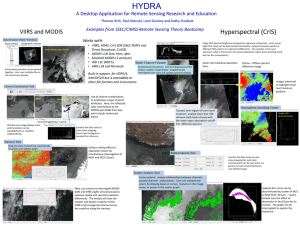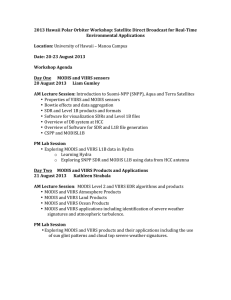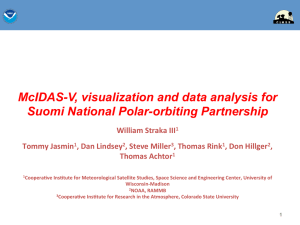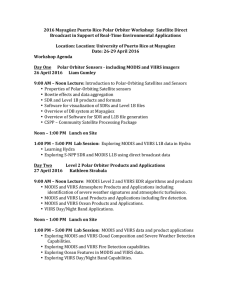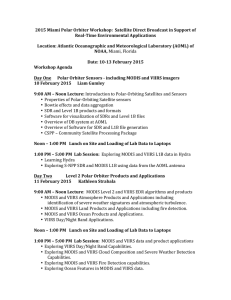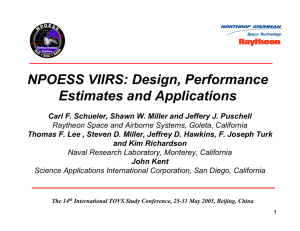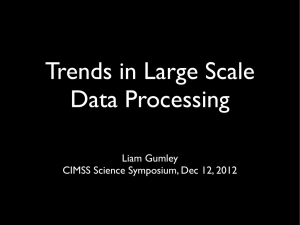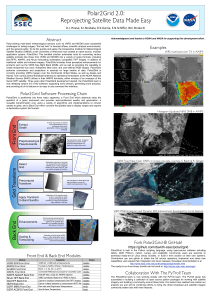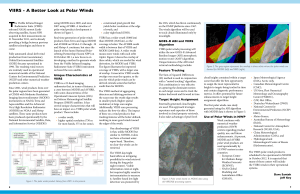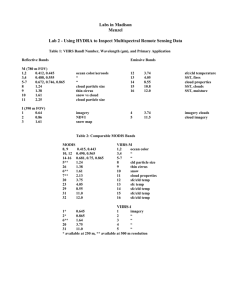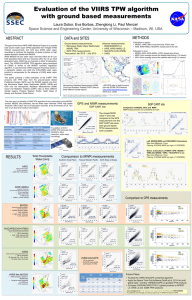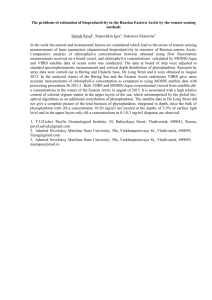VIIRS observations of a Karenia brevis bloom in the Northeastern
advertisement
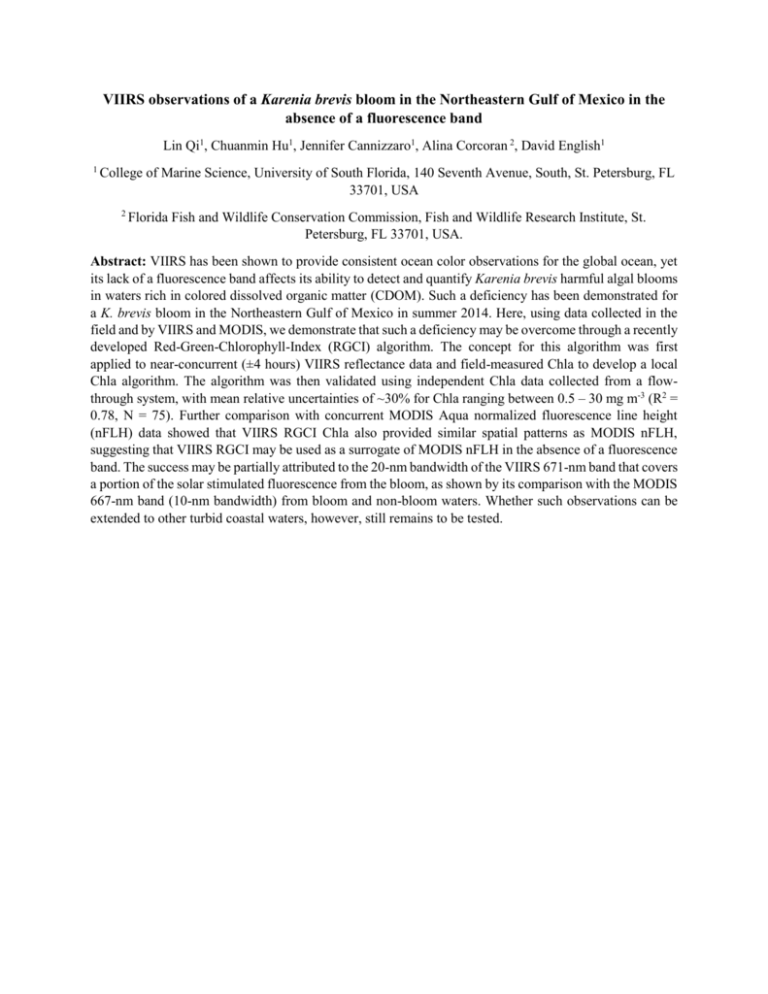
VIIRS observations of a Karenia brevis bloom in the Northeastern Gulf of Mexico in the absence of a fluorescence band Lin Qi1, Chuanmin Hu1, Jennifer Cannizzaro1, Alina Corcoran 2, David English1 1 College of Marine Science, University of South Florida, 140 Seventh Avenue, South, St. Petersburg, FL 33701, USA 2 Florida Fish and Wildlife Conservation Commission, Fish and Wildlife Research Institute, St. Petersburg, FL 33701, USA. Abstract: VIIRS has been shown to provide consistent ocean color observations for the global ocean, yet its lack of a fluorescence band affects its ability to detect and quantify Karenia brevis harmful algal blooms in waters rich in colored dissolved organic matter (CDOM). Such a deficiency has been demonstrated for a K. brevis bloom in the Northeastern Gulf of Mexico in summer 2014. Here, using data collected in the field and by VIIRS and MODIS, we demonstrate that such a deficiency may be overcome through a recently developed Red-Green-Chlorophyll-Index (RGCI) algorithm. The concept for this algorithm was first applied to near-concurrent (±4 hours) VIIRS reflectance data and field-measured Chla to develop a local Chla algorithm. The algorithm was then validated using independent Chla data collected from a flowthrough system, with mean relative uncertainties of ~30% for Chla ranging between 0.5 – 30 mg m-3 (R2 = 0.78, N = 75). Further comparison with concurrent MODIS Aqua normalized fluorescence line height (nFLH) data showed that VIIRS RGCI Chla also provided similar spatial patterns as MODIS nFLH, suggesting that VIIRS RGCI may be used as a surrogate of MODIS nFLH in the absence of a fluorescence band. The success may be partially attributed to the 20-nm bandwidth of the VIIRS 671-nm band that covers a portion of the solar stimulated fluorescence from the bloom, as shown by its comparison with the MODIS 667-nm band (10-nm bandwidth) from bloom and non-bloom waters. Whether such observations can be extended to other turbid coastal waters, however, still remains to be tested.
